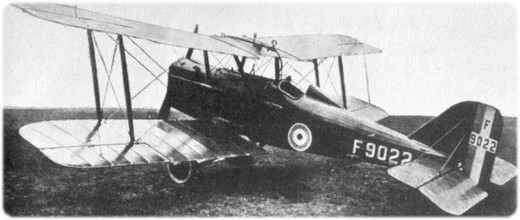 |
S.E.5
This is a personal favourite. I find the appearance appealing, in its sort of rugged harmony. The S.E.5 was actually a much better aircraft than the more well-known Sopwith Camel, and was also ready for duty on the western front earlier, but engine troubles initially halted delivery. In the summer of 1917, much thanks to the S.E.5 and Sopwith Camel squadrons, air supremacy was regained from Germany and held for the rest of the First World War.
[ Top of page ]
History
S.E.5 - Scout Experimental 5 - was conceived by the Royal Aircraft Factory in Farnborough, its maiden flight taking place on November 22, 1916. The performance was excellent and the design robust, but the new engine to be used, the 150 hp Hispano-Suiza 8, was underpowered and unreliable. Moreover, two of the three prototypes crashed due to a fault in the wing design, so the third had to be improved and rebuilt before production could commence.
 |
|
| A squadron of S.E.5a preparing for take-off in the autumn of 1917. Which squadron they belong to is unknown; the markings have been painted out by the censor. |
In March 1917, Royal Flying Corps 56 Squadron became the first and, as it turned out, only squadron to use the first version of the S.E.5 in active duty. Initially the pilots were not pleased with the aircraft. Among other things, the windshield was thought to be too big, so it had to be replaced. But gradually the new fighter became more and more popular.
The S.E.5 was an extremely strong and fast aircraft. It could be dived at high speeds without problems, and its performance at altitude was superior. It could not turn as steeply as the Sopwith Camel, but it was easier to fly and safer for novice pilots. The engine was generally considered too weak, and in June the stronger S.E.5a, with its 200 hp Hispano-Suiza, started to replace the original S.E.5. The new version equipped 21 British Empire squadrons (all but the RFC's 56 Squadron) and 2 U.S. squadrons during the war. Many of the Allied aces flew the S.E.5a, including Billy Bishop and Albert Ball.
A little more than 5,000 S.E.5 fighters were built by six different aircraft manufacturers, with Vickers coming out on top with 2,000.
[ Top of page ]
Video
| S.E.5a at La Ferte-Alais Air Show in France, 2003. | |
[ Top of page ]